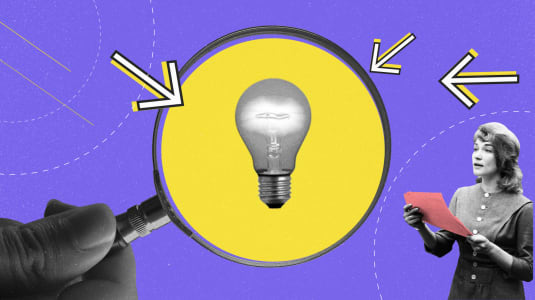Lean and Agile - What Are the Differences?
Lean and Agile are two popular methodologies that heavily influence the ways digital products are built. Despite focusing on similar values, they are quite different. Lean emphasizes reducing waste and increasing efficiency, while Agile focuses on rapid product delivery through iterative development. Both methods prioritize customer satisfaction and quality, but they differ in their approach and execution. This article explores the core principles of Lean and Agile, highlighting their differences and similarities to help you decide which approach best suits your project needs.

Table of contents
What is Lean?
The Lean approach to process and project management is based on the Toyota Production System, developed in the mid-20th century, combining human-guided automation and just-in-time processes. Based on a core set of Lean principles, the methodology is strongly focused on reducing or eliminating wasteful practices (for more, see our article “7 Lean Wastes”) to increase efficiency and productivity.
Although perspectives differ on exactly how many Lean principles there are, James Womack’s 1996 book, “Lean Thinking” listed five:
- Identify the value desired by the customer.
- Map the value stream for each product and challenge all of the wasted steps currently necessary to provide it.
- Create flow continuously through the remaining value-added steps (after wasted steps have been removed).
- Establish pull between all steps where continuous flow is possible.
- Seek perfection wherein the steps, time, and resources needed to serve customers are reduced.
A set of seven principles, more directly related to digital products, were identified in the Poppiendecks’ 2001 book, “Lean Software Development”:
- Eliminate waste: whatever part of the process does not add value should be cut from the workflow.
- Ensure quality: Regular quality checks at each stage of the development process, including incremental development, constant feedback, frequent testing, and automation.
- Create knowledge: Learning is preserved via thorough documentation of team processes and past work; including formal documentation, wiki sites, knowledge-sharing sessions, and ongoing training.
- Defer commitment: Planning from increment to increment, making informed decisions based on information available is better than making development decisions months in advance.
- Deliver fast: Delivering usable product versions (such as an MVP) allow for continuous feedback which is used to improve features and functionality.
- Respect people: A healthy product team encourages open communication, works through problems together, and creates a supportive environment.
- Optimize the whole: The development work and the team are an integrated, interconnected system. This big picture perspective encourages a holistic view of process flow, team capacity, and the likely results of strategic decisions.
These two lists are wholly compatible. Whichever Lean approach you adopt, the potential benefits include reduced lead times, optimized operating costs, and a boost to product quality.
What is Agile?
The Agile approach to software development began in 2001 with the writing of the Agile Manifesto:
We are uncovering better ways of developing software by doing it and helping others do it.
Through this work we have come to value:
- Individuals and interactions over processes and tools.
- Working software over comprehensive documentation.
- Customer collaboration over contract negotiation.
- Responding to change over following a plan.
From this seed came 12 principles, adding a layer of detail and clarifying what is (and isn’t) Agile development:
- Our highest priority is to satisfy the customer through early and continuous delivery of valuable software.
- Welcome changing requirements, even late in development. Agile processes harness change for the customer’s competitive advantage.
- Deliver working software frequently, from a couple of weeks to a couple of months, with a preference to the shorter timescale.
- Business people and developers must work together daily throughout the project.
- Build projects around motivated individuals. Give them the environment and support they need, and trust them to get the job done.
- The most efficient and effective method of conveying information to and within a development team is face-to-face conversation.
- Working software is the primary measure of progress.
- Agile processes promote sustainable development. The sponsors, developers, and users should be able to maintain a constant pace indefinitely.
- Continuous attention to technical excellence and good design enhances agility.
- Simplicity - the art of maximizing the amount of work not done - is essential.
- The best architectures, requirements, and designs emerge from self-organizing teams.
- At regular intervals, the team reflects on how to become more effective, then tunes and adjusts its behavior accordingly.
As we can see, the Agile principles are compatible with Lean principles, both with a focus on quality and efficiency, and centering the user/customer. Also similar to Lean, Agile systems – such as Scrum – also emphasize an incremental approach to design and development (in Scrum’s case, short bursts of focused, objective-driven activity known as ‘sprints’; each sprint resulting in a functioning product version). Agile benefits usually include better quality results, produced more rapidly (quicker time to market), and an efficient use of resources.
Lean vs. Agile software development – the differences
Given that Lean and Agile seem to share some foundational principles, and can be applied to produce similar efficient results, what are the differences between them? Let’s list them.
Focus and goal – Lean teams are focused on achieving a streamlined process by eliminating waste (anything that doesn’t contribute to the product’s development or anything that the customer or user won’t value). They do this through improvements to process flow and quality – the goal is zero defects. Agile teams, however, focus on satisfying user (and stakeholder) requirements for the product; focusing on product features and functionalities and using customer/user input and feedback to refine them.
Approach – Lean refines the production process by making small, incremental changes aimed at weeding out identified inefficiencies. Agile applies the idea of increments to the overall process, breaking it down into distinct phases or steps, such as planning, implementation, testing, and evaluation; taken further, this approach results in the sprint approach mentioned above.
Methodology – Lean methodologies focus on optimizing processes through minimizing (ideally eliminating) waste and risk. Agile, on the other hand, achieves results by making processes transparent, highly flexible, and adaptable to changing or emerging circumstances. The question is, where are your current systems and processes lacking? Too much waste, or too inflexible?
Timelines – Lean imposes no strict limit on how long a process (or part of a process) should take; it depends on the objective, the resources, the demand, and any number of other practical factors. Agile works in sprints or short bursts of activity, each producing a product version or part-version over a period normally of two to four weeks; this allows for potentially very rapid development.
Teams – Lean teams tend toward a ‘traditional’ setup: members with relevant skills and expertise headed by a team leader responsible for strategy and decision-making. Agile teams are cross-functional (a variety of skills and experience) and self-organizing; there may be a coordinator role in an Agile team (e.g. the Scrum master) but there is usually no manager or leader as such; the team makes its own decisions on the work to be done and how.\ As we can see, differences imply that the right choice of approach – Lean or Agile – depends on what you need to achieve with your software development, and also the capabilities of your development teams and how they may be used to working.
Lean vs. Agile software development – the similarities
As we’ve already said, while there may be differences, Lean and Agile are hardly at odds in terms of their outcomes – quality products that satisfy users. The two approaches have a number of similarities:
- Valuing the customer or user – Lean seeks to eliminate waste which can be defined as anything that isn’t valued by the customer; Agile drives its incremental development approach with user input and feedback. Both systems have a central focus on users.
- Continuous improvement – Whether it’s Lean’s focus on mapping work streams to identify waste and areas for improvement, or Agile’s regular process reviews (e.g. Scrum’s sprint retrospective meetings), both are constantly refining how development or production proceeds.
- Efficiency – Lean aims to create a production process with the minimum number of steps; Agile’s incremental approach aims to introduce product refinements as early in the process as possible. Both are geared to produce a product valued by users as rapidly as possible.
Lean vs. Agile software development
Lean is a project management method that boosts efficiency by cutting out waste, making the production process smoother. Agile focuses on the product and is designed to be flexible, allowing projects to change direction quickly if needed. The best method for you depends on your product goals and how your team currently works. The two methods share similarities, so they can be combined into a blended approach, like the Scaled Agile Framework (SAFe), which applies Lean principles on a larger scale for efficiency and uses Agile practices at the team level to enhance delivery.
Share this article:








